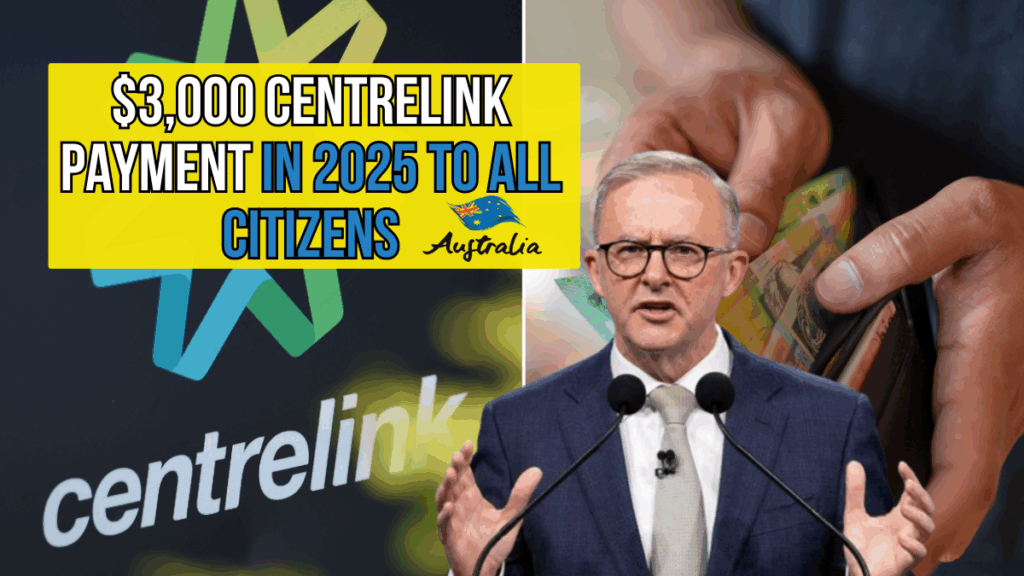A recent surge of misinformation across social media and online platforms has led many Australians to believe that the federal government is providing a $3,000 Centrelink payment in 2025 to all citizens. However, this is not a general financial benefit for the wider public. The actual payment in question is a targeted initiative called the Tertiary Access Payment (TAP), specifically designed to assist students from regional areas as they transition to higher education.

This article will explain the purpose of the TAP, who qualifies for it, the application process, and why it’s essential to rely on accurate information regarding government support programs.
Summary Table Of Centrelink Payment Fact vs Fiction
Topic |
Details |
|---|---|
Payment Name |
Tertiary Access Payment (TAP) |
Amount |
$3,000 (up to $5,000 for remote students) |
Eligibility |
Year 12 graduates aged 16 to 22 relocating for tertiary education from regional areas |
Purpose |
Financial support for relocation costs |
Application Method |
Online via myGov linked to Centrelink |
Official Website |
What is the Tertiary Access Payment (TAP)?
The Tertiary Access Payment is a one-time financial aid designed to support students from regional, rural, or remote areas who are moving away from home to attend university, TAFE, or other higher education institutions. The Australian government introduced the payment to reduce financial barriers for students in areas with fewer educational facilities.
Payment Amounts
- Standard Payment: Eligible students receive $3,000.
- Increased Payment: Students from outer regional, remote, or very remote areas may receive up to $5,000 to cover higher relocation expenses.
This initiative supports educational equality by ensuring that distance and relocation costs do not hinder access to higher education.
Eligibility Criteria for the $3,000 Centrelink Payment
The TAP is not available to everyone. It is a targeted financial assistance program with specific eligibility criteria.
To qualify, applicants must meet the following requirements:
- Age: Be aged 16 to 22 years old.
- Education: Have completed Year 12 or an equivalent secondary school qualification.
- Residency: Have lived in a regional, rural, or remote area before relocating for further education.
- Study Requirements: Be enrolled in an approved full-time tertiary course at a university, TAFE, or other higher education provider.
- Relocation: Move away from home to pursue studies.
- Citizenship: Be an Australian citizen, permanent resident, or hold a qualifying visa.
Special Considerations
- Students in Outer Regional or Remote Areas: Higher payments of up to $5,000 are available to applicants from more remote locations.
- Parental Income Test: The TAP may involve a parental income test to assess financial need.
Application Process for the Tertiary Access Payment
Eligible students can apply for the payment through Services Australia using the myGov portal. Follow these steps to apply:
Step 1: Set Up myGov Account
- Create a myGov account or log in if you already have one.
- Link your myGov account to Centrelink.
Step 2: Complete the Application
- Select “Apply for a Payment” and choose Tertiary Access Payment.
- Provide required documents including:
- Proof of Year 12 completion
- Proof of regional or remote residence
- University or TAFE enrollment confirmation
Step 3: Submit and Track Application
- After submitting the application, track its status through your myGov account.
- Centrelink may request additional information or documents.
Step 4: Receive Payment
- Approved applicants receive the payment directly into their bank accounts.
Debunking the $3,000 Centrelink Payment Rumor
Despite widespread online claims, there is no general $3,000 Centrelink payment for all Australians in 2025. The misinformation may have stemmed from the misunderstanding of the TAP.
Key Points to Remember:
- The $3,000 is not a stimulus payment.
- It is not for all citizens; only eligible regional students qualify.
- No official announcement has confirmed a universal payout.
- Always verify news through trusted sources like Services Australia.
Additional Government Support Programs
While there is no $3,000 general payment, Centrelink offers various financial assistance programs depending on personal circumstances. Some alternatives include:
- Youth Allowance: Financial support for students under 24 and job seekers under 21.
- Austudy: Assistance for students aged 25 and over.
- JobSeeker Payment: Support for unemployed individuals actively seeking work.
- Age Pension: For senior citizens aged 67 and older.
- Family Tax Benefit: For families with dependent children.
Each program has its own eligibility criteria and application process. Visit the official Services Australia website for detailed information.
FAQs: $3,000 Centrelink Payment 2025
1. Is every Australian eligible for the $3,000 Centrelink payment?
No. The $3,000 payment is part of the Tertiary Access Payment, available only to eligible regional students relocating for higher education.
2. Can remote students receive a higher payment?
Yes. Students from outer regional, remote, or very remote areas may qualify for up to $5,000.
3. How do I know if my area qualifies as regional or remote?
You can check your area’s classification using the Australian Statistical Geography Standard (ASGS) on the government website.
4. Can I apply for the TAP after I start my studies?
You must apply within 12 months of commencing your tertiary education.
5. Where can I apply for the Tertiary Access Payment?
You can apply online via the myGov portal linked to Centrelink.
Conclusion
The $3,000 Centrelink payment in 2025 is not a universal financial boost for all Australians. Instead, it is a valuable initiative aimed at supporting regional students transitioning to higher education. By understanding the true purpose and eligibility criteria of the Tertiary Access Payment, individuals can access the support they need while avoiding the spread of misinformation.
For the most up-to-date and accurate information, always rely on official government websites and trusted news sources.
For More Information Click HERE




